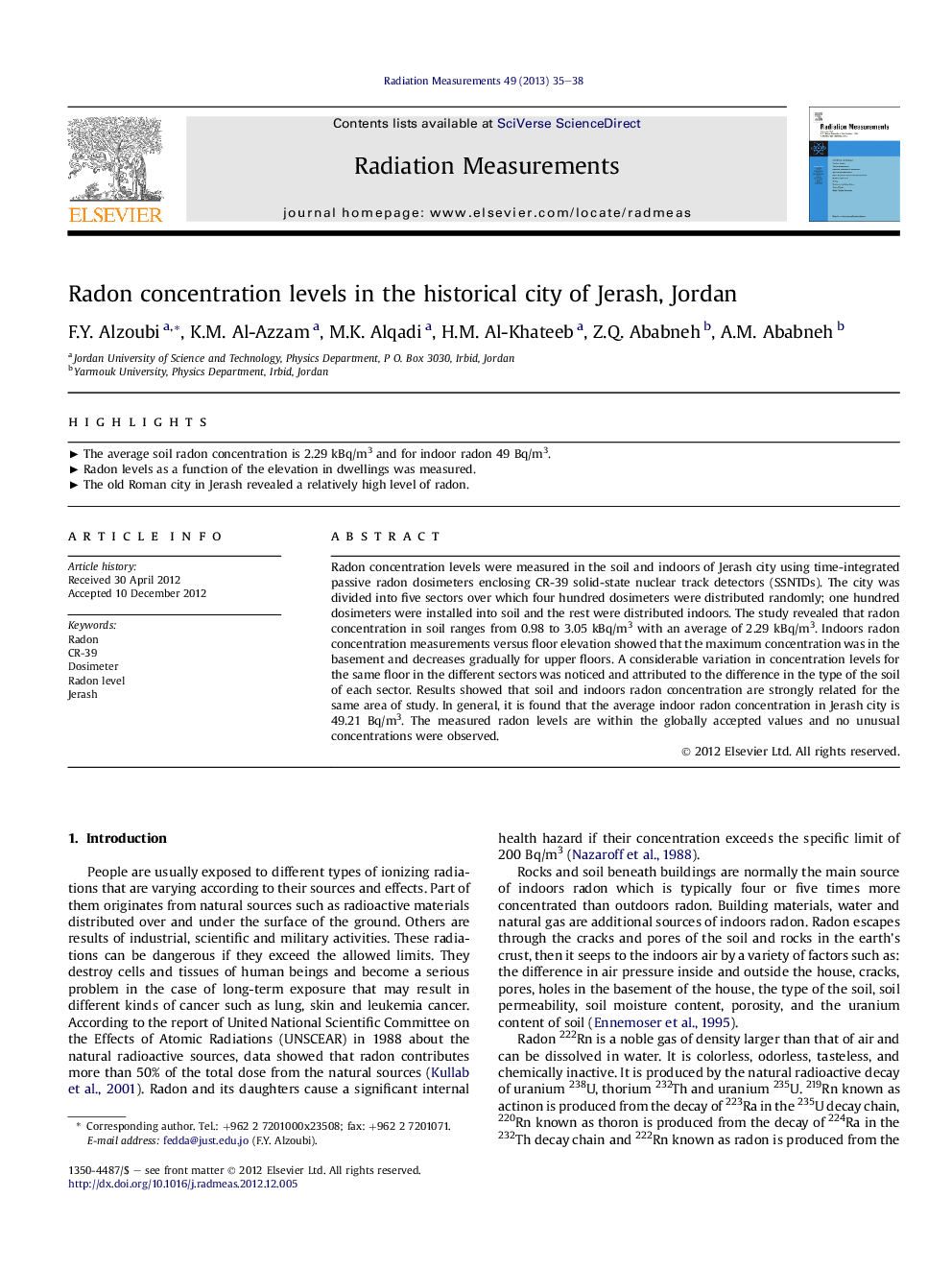| Article ID | Journal | Published Year | Pages | File Type |
|---|---|---|---|---|
| 1888417 | Radiation Measurements | 2013 | 4 Pages |
Radon concentration levels were measured in the soil and indoors of Jerash city using time-integrated passive radon dosimeters enclosing CR-39 solid-state nuclear track detectors (SSNTDs). The city was divided into five sectors over which four hundred dosimeters were distributed randomly; one hundred dosimeters were installed into soil and the rest were distributed indoors. The study revealed that radon concentration in soil ranges from 0.98 to 3.05 kBq/m3 with an average of 2.29 kBq/m3. Indoors radon concentration measurements versus floor elevation showed that the maximum concentration was in the basement and decreases gradually for upper floors. A considerable variation in concentration levels for the same floor in the different sectors was noticed and attributed to the difference in the type of the soil of each sector. Results showed that soil and indoors radon concentration are strongly related for the same area of study. In general, it is found that the average indoor radon concentration in Jerash city is 49.21 Bq/m3. The measured radon levels are within the globally accepted values and no unusual concentrations were observed.
► The average soil radon concentration is 2.29 kBq/m3 and for indoor radon 49 Bq/m3. ► Radon levels as a function of the elevation in dwellings was measured. ► The old Roman city in Jerash revealed a relatively high level of radon.
